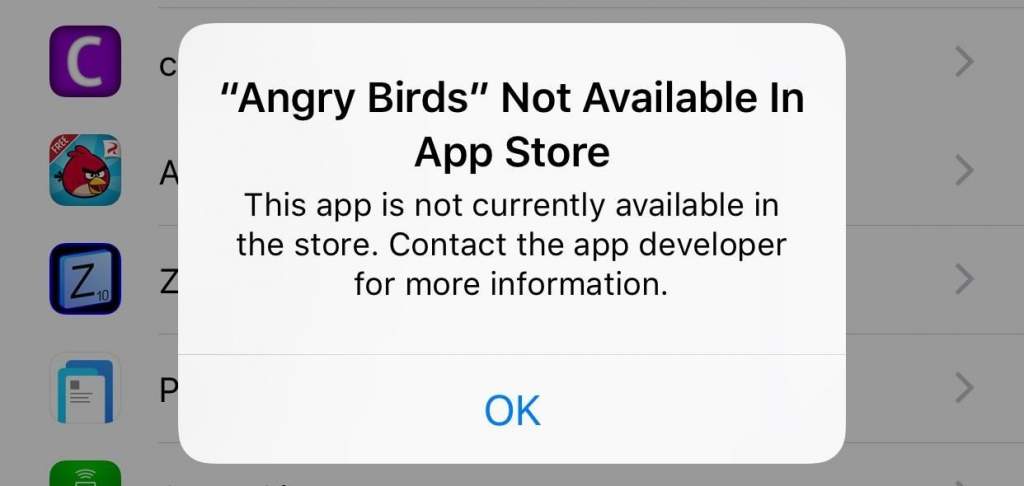Apple has stopped support for their older 32-bit apps in the new iOS 11, which was to be expected after the iOS 10.3 update featured the ability to recognize apps that are still running 32-bit processes on your iPhone, iPad or iPod Touch. Apple even removed restore images for 32-bit iOS devices including the iPhone 5 and iPad (4th gen) in the iOS 10.3.2 beta 1 update for developers so this shouldn’t come as a surprise at all.
Of course, the ship has been a long time coming, with Apple introducing the iPhone 5S back in 2013 which features a 64-bit A7 processor. Since then, Apple had started warning developers of its plan to ditch the 32-bit architecture on iOS devices. However, as many as 187,000 apps still run on the 32-bit framework and still aren’t updated and as such, stop working in iOS 11.
If you try to launch a 32-bit app in iOS 10.3, you will get a notification saying, “This app will not work with future versions of iOS. The developer of this app needs to update it to improve its compatibility.” You will still be able to go ahead and use the app (if it even works because it’s so old), but in iOS 11, the app will not even open at all.
You will get a notification saying, “The developer of this app needs to update it to work with iOS 11.”
Fortunately, there is a hidden tool in iOS 10.3 and newer which lets you find all of the 32-bit apps installed on your iPhone, iPad or iPod Touch. So before your favourite apps become obsolete (or if they already are), I will show you how to check which ones are outdated, and also how you can contact the developer of the app to get them to update their app to the new 64-bit architecture.
Step #1 – How to Check For 32-Bit Apps on Your iOS Device
On iOS 10.3 and newer, it is very easy to check for outdated apps on your device.
Simply follow the steps below.
- Launch the Settings app on your iOS device.
- Tap on the General option and then tap on About.
- Next, tap on Applications.
Here, a list of all outdated apps installed on your device should appear to give you notice.
If are not able to tap on “Applications” and you cant find any arrow next to it, that means that you do not have any 32-bit apps installed on your iOS device add as such, you do not need to worry about 32-bit apps on your device. You only need to watch out for new apps you install.
Step #2 – Contact the Developer
If there are 32-bit apps installed on your iOS device and they are really important to you or you just can’t lose them, then you should contact the developer right away to know if they are already working on an update. To contact the developer of an app, simply go to App Store and navigate to the app’s page. Alternately, you can go to your list of apps in the App Store and tap on the name of the app in the 32-bit list. Next, tap on the Developer Website. On their website, you should see their contacts link. Go ahead and leave them a message.
If you are able to contact the developer of the app, you should then wait for confirmation. Until you receive a confirmation, if you haven’t already updated your device to iOS 11, you might want to refrain from updating pas the latest iOS 10 version. This would help prevent the loss of the application’s functionality. However, if you refuse an update, it can leave your iOS device vulnerable to security exploits, so weigh the risks against the benefits. If all of the 32-bits on your iOS device can no longer be found in the App Store, chances are none of the apps are really functioning as they should right now anyway.
Light at the End of the Tunnel
However, all hope is not lost if you have a 32-bit app that you love as apps that apps that still run 32-bit will still likely run on older iPads and iPhones whose firmware versions max out at or below 10.3 The iPad 2 and iPad mini (1st generation), for example, will only go up to iOS 9.3.5. The iPhone 5 and 5c, the last 32-bit phones made by Apple, did not receive the new iOS 11 update.
Change is constant and Apple’s change from 32-bit to focus solely on 64-bit is ultimate to everyone’s benefit. This will make it easier for Apple to secure its ecosystem and streamline performance. Them focusing less on their older devices and older operating systems will help them free their resources up for further renovation. With this, the cycle will someday stare a new dawn with the launch of 128-bit operating systems and devices.
You might want to check out these posts too:
- How To Use Your Smartphone’s Camera As A Translator
- How to Fix Weather Widget not Working on iPhone and iPad
- How To Download Android App From Third Party Store Outside Google Play Store
- 7 simple tips to improve performance on your Android smartphone

